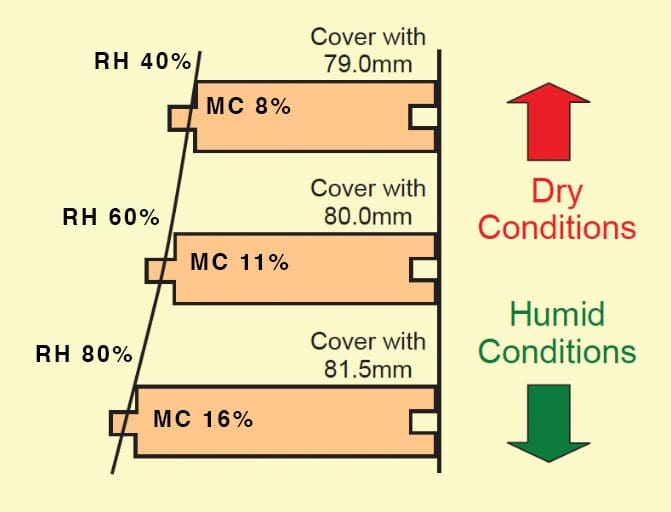Floor Expansion
PROVIDING FOR FLOOR EXPANSION
Ever since there have been timber floors, seasonal movement has been observed where floors would shrink during drier weather and expand during more humid weather. Although flooring products have progressed a long way in terms of their manufacture and construction, there is still a need to adequately provide for floor expansion and this is in all timber related flooring products including solid T&G, engineered, bamboo and laminate. This information sheet will explain this movement and provide a general outline of the requirements for the different flooring types including both fixed and floating installations.

RELATIVE HUMIDITY, MOISTURE CONTENT AND EXPANSION
The relative humidity is a measure of how moist the air is and the higher the percentage value, the moister the air. When the relative humidity is high, moisture in the air is absorbed into the flooring causing the moisture content of the flooring to increase. An increase in flooring moisture content is accompanied by swelling.
This is shown in the adjacent diagram for solid timber flooring which has greater seasonal movement in board width than other products. A floor’s response is usually relatively slow and we may only see minor changes from month to month or with floating floors we may see only minor observable movement. However during prolonged wet periods all flooring types do expand. The moisture in the air is absorbed into the boards and swelling results. To cope with this natural expansion movement allowance must be provided at the time of floor installation and failure to adequately provide for this swelling has resulted in many performance issues.


